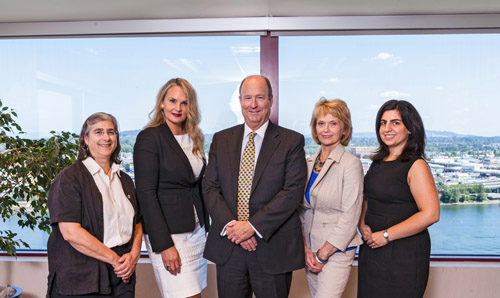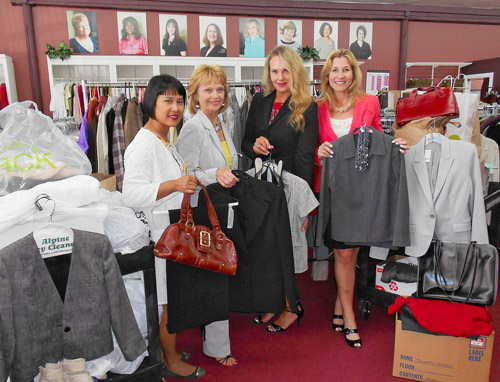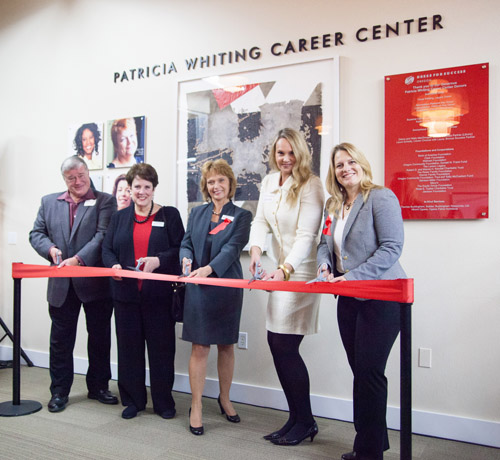BY JON SHADEL
Bank of America partners with nonprofits to create opportunities for women and drive economic growth.
Bank of America partners with nonprofits to create opportunities for women and drive economic growth.
BY JON SHADEL
 “We are passionate about supporting workforce development and strategically investing in local organizations that are making an impact,” says Roger Hinshaw, market president for Bank of America in Oregon and Southwest Washington. But even as Oregon’s average unemployment rate dips below 7%, a closer look at the demographics reveals that unemployment and underemployment disproportionately affect women and, even more so, women of color.
“We are passionate about supporting workforce development and strategically investing in local organizations that are making an impact,” says Roger Hinshaw, market president for Bank of America in Oregon and Southwest Washington. But even as Oregon’s average unemployment rate dips below 7%, a closer look at the demographics reveals that unemployment and underemployment disproportionately affect women and, even more so, women of color.
Bank of America sees great opportunity to spur economic growth by investing in women. Across the state, 16.5% of women are living in poverty according to the National Women’s Law Center. And this percentage is much higher for minorities: 39.1% of black women and 28.4% of Hispanic women live at or below the poverty line.
Nonprofits like Dress for Success Oregon and Oregon Tradeswomen, Inc. (OTI) are committed to helping women find jobs with living wages. However, finite resources result in long waiting lists and make it challenging for such organizations to serve those who need assistance the most. These are problems Bank of America is working to solve.
“Being bankers, we’re really driven by data, and when you examine the unemployment data for female job seekers, it’s not a very encouraging picture,” says Monique Barton, senior vice president of corporate social responsibility for Bank of America in Oregon and Southwest Washington. “These numbers have encouraged us to focus our philanthropic investments to tackle this head on. We aim to use our dollars and human capital to level the playing field.”
Bank of America has been a top corporate giver in the region for more than a decade. And in 2013, it invested $2.2 million in nonprofit charities focused on jobs, hunger and housing in Oregon and Southwest Washington. The bank is committed to working closely with local organizations. The bank’s local employees volunteer a combined 20,000 hours annually, and employees across the company volunteer 2 million hours a year.
 Dress for Success Oregon is one of many organizations benefiting from Bank of America’s charitable investments. Each year, it serves over 1,500 women—providing interview support, job preparation and career mentorship programs. Eighty percent of Dress for Success clients are single mothers struggling to support their children. “It’s important to break down barriers so women can earn enough wages to support their family and move out of poverty,” says Barb Attridge, cofounder and retired executive director of Dress for Success Oregon.
Dress for Success Oregon is one of many organizations benefiting from Bank of America’s charitable investments. Each year, it serves over 1,500 women—providing interview support, job preparation and career mentorship programs. Eighty percent of Dress for Success clients are single mothers struggling to support their children. “It’s important to break down barriers so women can earn enough wages to support their family and move out of poverty,” says Barb Attridge, cofounder and retired executive director of Dress for Success Oregon.
Dress for Success Oregon was awarded the bank’s Neighborhood Builder Grant, providing $200,000 in unrestricted funds and leadership training. “Bank of America recognized the important work we are doing to help women get into the workforce and become financially self-sufficient,” Attridge explains. Dress for Success used the funding to build a new Career and Workforce Development Center, expand programs and offer more in-depth training. “The new center is essential to our growth,” she says. “We couldn’t have done it without Bank of America’s investment.”
Oregon Tradeswomen Inc. is another Bank of America partner. Women make up only 3% of those working in the trades and manufacturing. But OTI is working to address this gender disparity through education, leadership and mentorship. The results are compelling. In 2013, OTI helped 83 low-income women find employment—in trades like carpentry, electrical and plumbing—including 28% women of color.
 “Bank of America is helping us address the needs of women in poverty — not with a handout but with a hand up,” says Connie Ashbrook, executive director of OTI. In addition to providing funding and regular leadership training, Bank of America’s employees offer financial education programs for the low-income women OTI serves. “This financial education is an integral part of supporting women in long-term careers,” she explains.
“Bank of America is helping us address the needs of women in poverty — not with a handout but with a hand up,” says Connie Ashbrook, executive director of OTI. In addition to providing funding and regular leadership training, Bank of America’s employees offer financial education programs for the low-income women OTI serves. “This financial education is an integral part of supporting women in long-term careers,” she explains.
“There is a lot of data pointing to women as economic drivers since they invest more of their income in families and communities,” says Nicole Frisch, a BOA assistant vice president. This is why Bank of America also works with other organizations like Urban League of Portland and Portland Community College to create job opportunities for women. The company’s executives also walk the talk, serving on a number of nonprofit boards and leading other businesses to take action. “At the end of the day, we’re working to improve people’s financial lives and create a vibrant community,” Frisch says. “And one of the best ways to do that is investing in women.”
Related OB Video: Dress for Success Oregon


